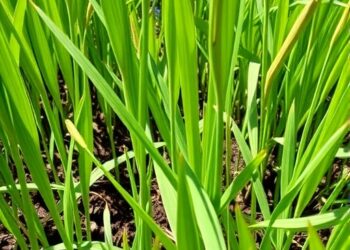The National Institute of General Medical Sciences, a branch of the National Institutes of Health (NIH), has awarded Yubing Sun, associate professor of mechanical and industrial engineering at the University of Massachusetts Amherst, a $1.9 million Maximizing Investigators’ Research Award to support the exploration of the fundamental principles behind the process that close gaps caused by injury or growth between cells. This research has the potential to push forward advances in our understanding of wound healing, cellular regeneration therapies and embryonic development.
The National Institute of General Medical Sciences, a branch of the National Institutes of Health (NIH), has awarded Yubing Sun, associate professor of mechanical and industrial engineering at the University of Massachusetts Amherst, a $1.9 million Maximizing Investigators’ Research Award to support the exploration of the fundamental principles behind the process that close gaps caused by injury or growth between cells. This research has the potential to push forward advances in our understanding of wound healing, cellular regeneration therapies and embryonic development.
The gaps under investigation are 0.5-5 millimeters in size, which is more physiologically relevant and comparatively large in this field. “Usually when people study those gap closure processes they’ll leave a super small gap—just a few cells in size,” says Sun. “This is larger than that—not just a few cells, but thousands or more.”
“Our biggest goal here is to have a really a good theoretical understanding of: what are the individual contributions from individual factors to this process?” he says. “When there are multiple factors involved at once, which one regulates the others?”
As an example of a gap-closure process, he points to neural tube closure during embryonic development. “It’s a well-studied process in animal models, but as an engineer, we want to introduce a more controlled environment to study how individual factors regulate this process,” he says. Normally, in animal studies, the researcher would manipulate different genes to see how this impacts development. “But everything’s changing simultaneously,” he explains. “It’s really hard to control individual factors.”
Instead, Sun and his team plan to create controlled mechanical and biochemical environments so that they can investigate one factor at a time. These factors include things like forces, gap geometry and matrix and tissue stiffness.
While the research itself is focused on understanding the fundamental processes of gap closure, Sun points to several domains where this research could support future advancement.
One future application is wound healing. Sun says that a device already exists that uses a vacuum cup to stretch the skin to accelerate the closure process—but they don’t fully understand how it works. “Right now, many parameters are empirically determined, but if you understand the process, you can design based on the principle and things become more efficient,” he says.
Another direction this research can inform is in cellular regeneration. Sun points out that newborn mice and zebrafish have hearts that can regenerate after an injury. “Imagine closing that gap or wound, and the cells on the surface of a heart can differentiate into those muscle cells in the heart,” he says. “But humans don’t have that capability.” A deep understanding of the gap-closure process could inspire future therapeutics to regenerate heart cells.
Sun points to mechanomedicine, drugs able to mimic the mechanical cues that he aims to recreate in his lab, as a possible output informed by his current, fundamental research. “You’re not directly applying mechanical cues, but you use a drug to mimic that effect,” he says.




